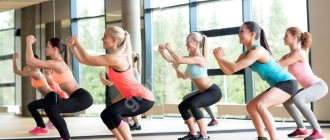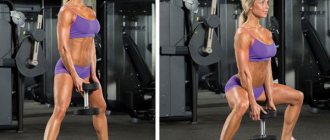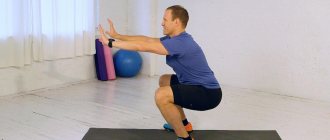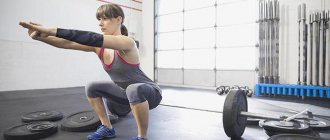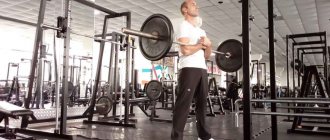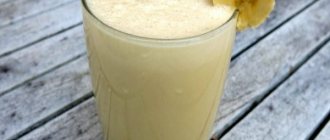Today we will talk in detail about plie squats - what they are, what the technique is, pros, cons, and also how to distinguish them from similar exercises: classic squats and sumo.
In simple terms, these are squats with maximum knee extension to the sides. The target muscles for this exercise are the inner thighs and gluteus maximus. Plie squats are especially popular among women who want to correct the contours of the butt and the shape of the hips. Men, by squatting with additional weight, achieve significant success in building up leg muscles.
The technique of plie squats for women and men does not differ, but the number of repetitions and approaches can be varied, depending on the degree of preparedness of the athlete.
Execution technique
For the exercise to bring maximum benefit, it requires proper technique at each stage of execution.
Initial position
- place your feet as wide as possible, toes should point outward;
- fix the vertical position of the body so that it does not lean forward and the shoulders are not rounded.
- Hand position is not of primary importance. Your arms can be kept on your sides or extended in front of you.
Movement
- as you inhale, move down and count 1, 2 and 3 until your thighs are parallel to the floor or go down a little deeper;
- hold at the bottom point for a few seconds and feel how the muscles tense and stretch;
- as you exhale, return to the starting position, fully straightening your knee joints and straightening your legs;
Proceed immediately to the next rep. No pause is required between approaches.
Plie Squat Technique | Plie Squat [90-60-90]
Important details!
- During all approaches, you need to look at a distant imaginary point located above eye level. This technique allows you to control the correct location of the housing. The back should be perfectly flat, and a slight deflection should be maintained in the lumbar region.
- Performing plie requires the correct position of the knees, that is, similar to that followed in the classic version, so that the kneecaps do not extend beyond the line of the toes.
- To maintain tension in the muscle working groups, you should not strain your knee joints. At the top extreme point, the knees should be completely straightened.
- When difficulties arise with balance, the first lessons can be carried out with the use of support, which allows you to consolidate coordination skills.
Recommendations
- The load when performing the Plie squat should fall on the inner thighs. To achieve this, the feet must be kept turned outward as much as possible.
- The range of motion has a direct impact on the load on the gluteal muscles. The deeper you sit, the higher the effectiveness of the exercise.
Compliance with these important points allows you to achieve the correct execution of Plie and get maximum benefit.
Kettlebell Squat: Benefits
Along with other variations, squats with a kettlebell exercise perfectly work the muscles of the lower parts of the body. The quadriceps work the most. The buttocks, back of the thighs, calves, and lower back are also involved. Holding a kettlebell in your hands puts a static load on your shoulders and arms. The exercise is used for both women and men.
In addition to high-quality muscle development, the exercise provides the following benefits:
- Performing this requires good joint flexibility and maintaining stability in the lower back. For an athlete, these qualities are important.
- The amplitude with which you move helps improve stretching of the legs and buttocks, and the greater the stretch, the better the results of the exercise.
- When performed, blood circulation in the pelvic area is normalized, which prevents congestion and a number of pathologies.
When performing deep squats, the knee joints are significantly loaded. For this reason, they are best avoided by beginners - squat until parallel with the surface. Caution is also needed for those who have lower back problems. In general, the exercise is safe if done correctly.
Execution options
There are several variations of the wide-foot squat:
- Plie pulse when squatting with a small amplitude. Lower your hips to the horizontal, lift them up quite a bit and repeat again. In this way, the result is consolidated, that is, the target muscles are refined.
- Plie with emphasis on one leg , allowing you to redistribute the load. One leg is placed on the toe, and the other on the foot. This option is ideal for diversifying training and pumping up a specific leg.
- The toe plie is a variation of the exercise for well-coordinated and fit people. Only socks touch the floor. Not only the inner thigh muscles are involved in the work, but also the calves.
- On the calf muscles , when only the heel is lifted alternately from the lowest point. This exercise gives the calves a beautiful and well-developed relief.
- With a jump , when they jump at the top point. This variation has an aerobic component and trains the heart muscle well.
How to do plie squats correctly
What not to do
Do you lean forward too much when squatting? This happens because you are simply afraid of falling backwards. Want to know a clever trick to trick your brain? Just place a low bench in the back and it's done! Even if you are led back, the bench will protect you and protect you from falling.
The main mistakes girls make:
- gaze directed to the floor. Dear ladies, remember the main thing - you need to look straight ahead ! Try to catch some point and concentrate on it. You can imagine ripe oranges or juicy plums. Always think about something pleasant;
- shallow squat. If you want to develop the muscles of your buttocks, you will have to squat deeply. Too hard? But imagine what results you will achieve after just a month of regular training!
- complete relaxation of the legs at the top point. Muscles should always be tense, we train, not rest, right?
- knees “walk” from side to side. The most common mistake that occurs in girls with poor stretching. Do not forget that before each workout you need to carry out a complex for the development of ligaments. Within a couple of weeks you will notice progress.
A few tricks that will make your workout much more effective and enjoyable.
Analysis of the exercise
What muscles work
The exercise is a classic variation of squats, which are classified as compound movements involving all the muscles of the lower extremities. The calf muscles, gluteus maximus, femoral muscles, including the bi- and quadriceps muscles, as well as the vastus medialis and sartorius, adductor muscles, take an active part in the work.
To control movements and maintain balance during the exercise, the soleus muscles and stabilizers are involved in the work. The role of the latter is performed by the press with back extensors.
Plie and classic squats: what is the difference
The main difference is the placement of the legs. When performing plie, the feet are wide apart and the toes are turned outward. Changing the position, technique and range of movements allows you to ensure that the load is directed to the inner thighs and gluteal muscles.
Difference between Plie and Sumo squats
Many people mistakenly confuse these two exercises with each other, but this is absolutely not true. When performing sumo, the pelvis is pulled back and the body is moved forward. This technique allows you to use a much larger load in the form of heavy weight.
“Plie” is performed with a strictly vertical position of the body and the pelvis is not pulled back so much. The muscles of the inner thigh are involved in the work. This is a completely different load distribution, so it’s impossible to say that these two squat options are the same.
Why do plie squats?
Wide-legged squats are an effective movement that complements the main exercise complex, which is designed to work and develop the muscles of the legs. They do not replace classic squats and can be included in the training program as a supplement. “Plie” can be used separately if it is necessary to increase and change the direction of the workload, as well as adjust the shape and increase the volume of a certain muscle group. High-quality loading of the target muscle group is accompanied by the development of stabilizing muscles of the abdominal and back muscles.
Varieties of Plie
The calisthenic variant with overcoming one’s own body weight is usually referred to as the “sumo” interpretation. There are many “power” versions that can significantly complicate squats. Such varieties allow you to increase the “press” load. You can use a kettlebell, t-bar, dumbbell, barbell.
Who is the exercise suitable for?
Representatives of the fair sex include squats with wide stance in their training. There is a completely reasonable explanation for this, so this choice is due to practicality.
Plie differs from the classic variation in that the movement reduces the pressure that the workload puts on the quadriceps and focuses on problem areas for women, which are quite difficult to work out when performing standard movements. These muscle groups include the gluteal and adductor muscles.
Squats with dumbbells between legs. Plie squats
Benefits of plie squats
- squats with a wide stance are among the few movements that allow you to load and work the inner thigh muscles, which are hard to reach;
- plie refers to exercises that allow you to work the inner surface of the thigh muscles;
- the knee joints are not overloaded due to the fact that the movement when performing plie is anatomically natural, but this is only true if the correct safety precautions are followed, which reduces the risk of injury;
- the exercise is great even for those athletes who have suffered a back injury, and they can even use weights, which is due to the specifics of the movement and position, which allows them to isolate the spine;
- the movement puts a complex load on a fairly large number of muscles;
- plie squats are well suited for both building and separating muscle mass in the lower part of the body;
- load variability when using different types of projectiles;
- increase elasticity and mobility of the articular-ligamentous apparatus.
Plie squats are suitable for performing both in the gym and at home.
How to make plie squats more difficult?
The standard technique of execution is classic, and the use of weights in the form of dumbbells, kettlebells, barbells allows you to complicate the exercise. This is not the only way available to improve the efficiency of the basic movement. You can make squats more difficult by doing the following:
- The deeper you squat, the more load your gluteal muscles receive. How to achieve this? You can use a step platform, plates or plinths placed under each leg. This option is not suitable for everyone. It is recommended for people with high hip flexibility.
- Raising at the top point of the movement, that is, when returning to the starting position. This allows you to pump your ankle and develop your calf muscles even more. This approach to performing the exercise significantly increases the load.
These two options allow you to diversify your workout and further work out hard-to-reach areas of the leg muscles.
Butt of dreams
- The Basics: The Classic Barbell Squat
- Still not sure which is better: the barbell squat or the Smith squat? The article “Squats in Smith from A to Z” will answer your question in full!
- Squats at the lower block of the crossover
- “Legs abducting and abducting in a sitting machine”
- Do you want rounded buttocks? Then you need to master the swing and the Wide Bone will help you with this: “Exercises for the buttocks: gluteal swings” and Butt with a shelf: how to lift the buttocks and remove the depressions on the sides of the hips?
- “Glute Bridge: Exploding the Buttocks”
- Analysis of technique, possible mistakes and important nuances of one of the most difficult exercises: “Back lunges or Bulgarian lunges”
- "Romanian barbell deadlift for women"
- They don’t write about this: the harm and danger of squats in Smith
- Glute Bridge: 11 Effective Options
- How to squat correctly to pump up your butt?
[Total votes: 3 Average: 5/5]
Bone Wide
This article was reviewed by a certified nutritionist who has a bachelor's degree in nutrition and dietetics, D. G. Veremeev.
Articles are for informational and educational purposes only and are not a substitute for professional medical advice, diagnosis, or treatment. Always consult your physician with any questions you may have about a medical condition.
Introducing an exercise into a training program
Plie squats are basic movements for the gluteal and calf muscles. It is recommended to perform the movement at the beginning of the lesson, but after a good warm-up. It is very useful and perfectly complements lunges or leg presses. The number of repetitions depends not on the level of training, but on whether additional weights are used:
- a large number of repetitions (15-20 times) with load variability, which is entirely determined by the athlete’s own level of training;
- power squats cannot have the same repetition rate and are performed 8-10 repetitions or 10-50 in 4-5 approaches, when the muscles are given relief.
Plie squats can be used as finishing movements to complete a workout. In this variation, they are performed to complete failure, and no weights are used.
Weights: to use or not?
The use of sports equipment helps the athlete regulate the load level and achieve real training stress. This is a fairly effective and profitable technique, which largely allows you to achieve the goals set for the athlete.
High and peak loads are not suitable for everyone. For some athletes, weights are contraindicated. This applies to people with injuries to the hip and knee joints, spine, and so on. They cannot perform squats using implements.
Category “Useful tips”
Do you have a mirror in your apartment? We think so. Great! Perform squats only in front of a mirror, so you will see the main mistakes and easily correct them. Look at yourself, admire your body a little and start training. Useful tips:
- light weight is the key to a quality workout. Do not use dumbbells that cannot be lifted, otherwise you may injure your spine. We are not preparing for the Ms. Olympia competition, safety and comfort are paramount;
- use elastic bandages. During the exercise, the ligaments are under serious load, so it is better to minimize tension;
- Warm up thoroughly . Unwarmed muscles are easy to injure. If you feel discomfort and pain in your legs, stop training immediately.
- watch videos of professional trainers. There are many videos on the Internet where athletes share secrets and give useful tips. Put their recommendations into practice and you definitely won’t go wrong!
Is it possible to make the training even more effective? Certainly! You can always invent something more interesting. Let's talk about one simple but very interesting feature.
Plie squats according to the rules
In order for the exercise to bring maximum benefit, the following points must be taken into account:
- The legs should be wider than the shoulder girdle, and the toes should be spread to the sides. The direction of the toe sets the vector of movement of the knee joint.
- The knees are directed towards the toes. The left one “looks” to the left, and the right one “looks” to the right.
- The body is fixed strictly vertically, so when moving you must be sure to monitor this moment.
- Plie power squats are performed smoothly and at a slow pace, controlling every movement.
- The gaze should always be straight and the chin raised.
- Returning to the starting position requires “switching off” the knees, that is, they remain bent until the very extreme point.
Contraindications
Let's find out who it is not suitable for, since the list of contraindications for plie squats is quite impressive:
- People with sore knees, back, hip joints;
- With exacerbation of varicose veins;
- For acute heart failure, hypertension, after a heart attack, stroke;
- During the period of a cold, especially against the background of elevated body temperature;
- For glaucoma, anemia;
- During the period of exacerbation of any chronic diseases, especially rheumatological or related to the respiratory system;
- Pregnant women. During this period, girls should generally be more careful and look for analogue exercises. For example, pregnant women are not always allowed to ride a bicycle;
- After surgery.
